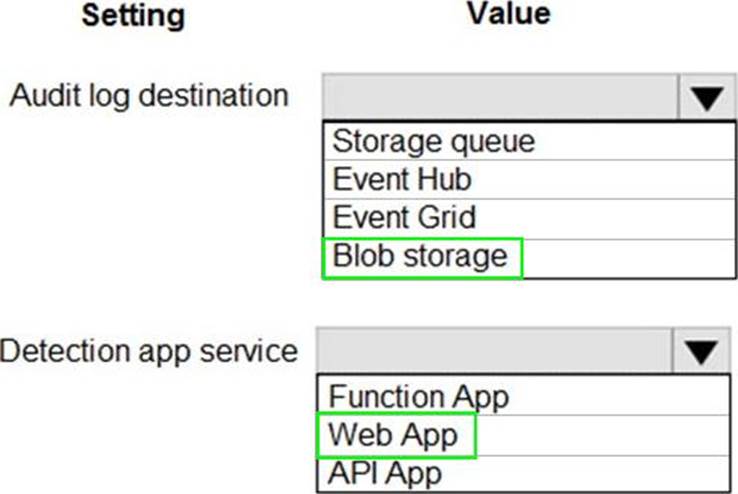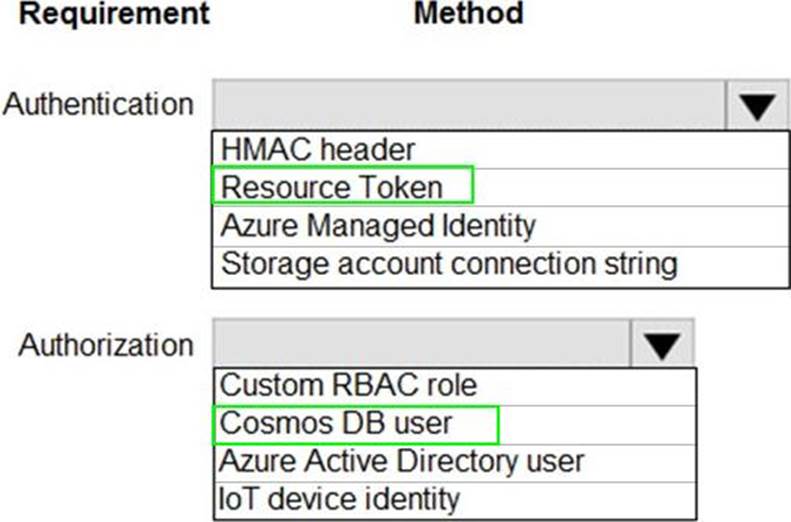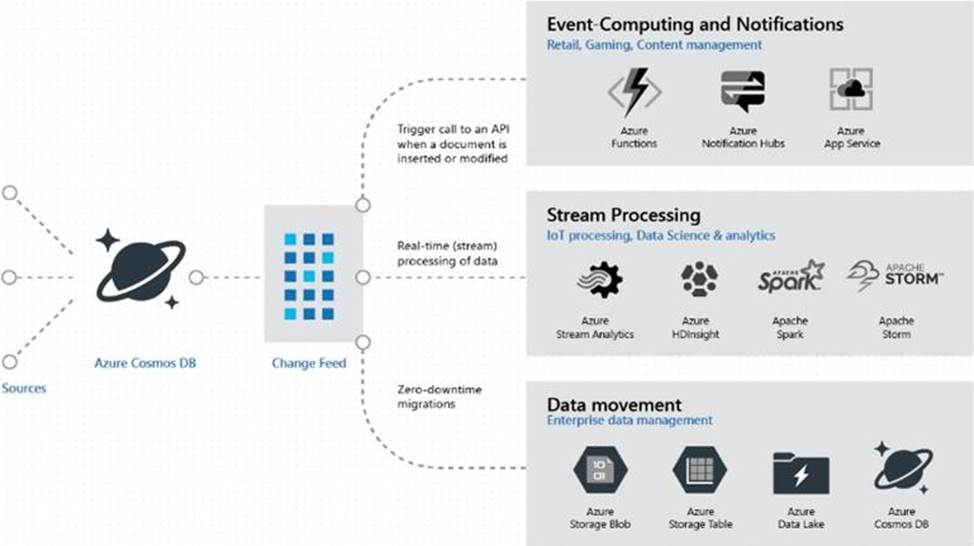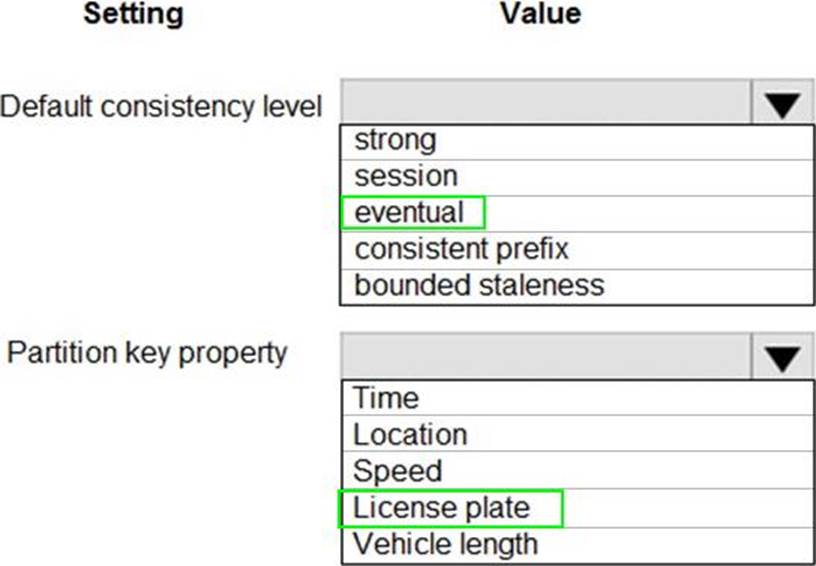Microsoft DP-201 Designing an Azure Data Solution Online Training
Microsoft DP-201 Online Training
The questions for DP-201 were last updated at Apr 18,2025.
- Exam Code: DP-201
- Exam Name: Designing an Azure Data Solution
- Certification Provider: Microsoft
- Latest update: Apr 18,2025
Topic 1, Trey Research
Case study
This is a case study. Case studies are not timed separately. You can use as much exam time as you would like to complete each case. However, there may be additional case studies and sections on this exam. You must manage your time to ensure that you are able to complete all questions included on this exam in the time provided.
To answer the questions included in a case study, you will need to reference information that is provided in the case study. Case studies might contain exhibits and other resources that provide more information about the scenario that is described in the case study. Each question is independent of the other questions in this case study.
At the end of this case study, a review screen will appear. This screen allows you to review your answers and to make changes before you move to the next section of the exam. After you begin a new section, you cannot return to this section.
To start the case study
To display the first question in this case study, click the Next button. Use the buttons in the left pane to explore the content of the case study before you answer the questions. Clicking these buttons displays information such as business requirements, existing environment, and problem statements. If the case study has an All Information tab, note that the information displayed is identical to the information displayed on the subsequent tabs. When you are ready to answer a question, click the Question button to return to the question.
Background
Trey Research is a technology innovator. The company partners with regional transportation department office to build solutions that improve traffic flow and safety.
The company is developing the following solutions:
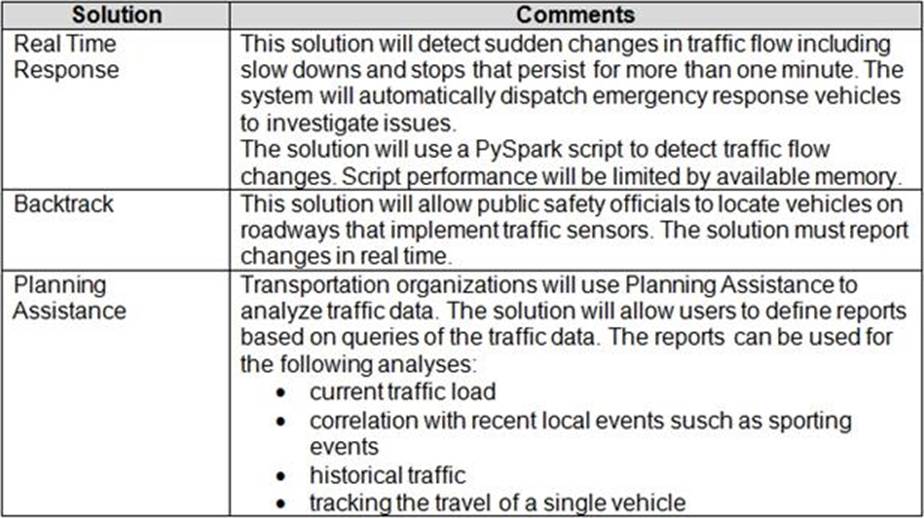
Regional transportation departments installed traffic sensor systems on major highways across North America.
Sensors record the following information each time a vehicle passes in front of a sensor:
– Time
– Location in latitude and longitude
– Speed in kilometers per second (kmps)
– License plate number
– Length of vehicle in meters
Sensors provide data by using the following structure:
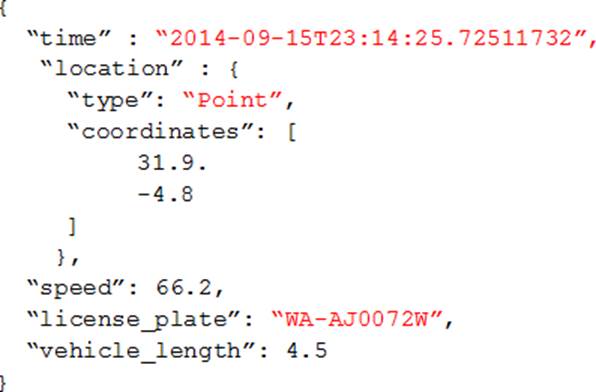
Traffic sensors will occasionally capture an image of a vehicle for debugging purposes.
You must optimize performance of saving/storing vehicle images.
Traffic sensor data
– Sensors must have permission only to add items to the SensorData collection.
– Traffic data insertion rate must be maximized.
– Once every three months all traffic sensor data must be analyzed to look for data patterns that indicate sensor malfunctions.
– Sensor data must be stored in a Cosmos DB named treydata in a collection named SensorData
– The impact of vehicle images on sensor data throughout must be minimized.
Backtrack
This solution reports on all data related to a specific vehicle license plate. The report must use data from the SensorData collection.
Users must be able to filter vehicle data in the following ways:
– vehicles on a specific road
– vehicles driving above the speed limit
Planning Assistance
Data used for Planning Assistance must be stored in a sharded Azure SQL Database.
Data from the Sensor Data collection will automatically be loaded into the Planning Assistance database once a week by using Azure Data Factory. You must be able to manually trigger the data load process.
Privacy and security policy
– Azure Active Directory must be used for all services where it is available.
– For privacy reasons, license plate number information must not be accessible in Planning Assistance.
– Unauthorized usage of the Planning Assistance data must be detected as quickly as possible. Unauthorized usage is determined by looking for an unusual pattern of usage.
– Data must only be stored for seven years.
Performance and availability
– The report for Backtrack must execute as quickly as possible.
– The SLA for Planning Assistance is 70 percent, and multiday outages are permitted.
– All data must be replicated to multiple geographic regions to prevent data loss.
– You must maximize the performance of the Real Time Response system.
Financial requirements
Azure resource costs must be minimized where possible.
You need to design a sharding strategy for the Planning Assistance database.
What should you recommend?
- A . a list mapping shard map on the binary representation of the License Plate column
- B . a range mapping shard map on the binary representation of the speed column
- C . a list mapping shard map on the location column
- D . a range mapping shard map on the time column
You need to design the vehicle images storage solution.
What should you recommend?
- A . Azure Media Services
- B . Azure Premium Storage account
- C . Azure Redis Cache
- D . Azure Cosmos DB
HOTSPOT
You need to ensure that security policies for the unauthorized detection system are met.
What should you recommend? To answer, select the appropriate options in the answer area. NOTE: Each correct selection is worth one point.
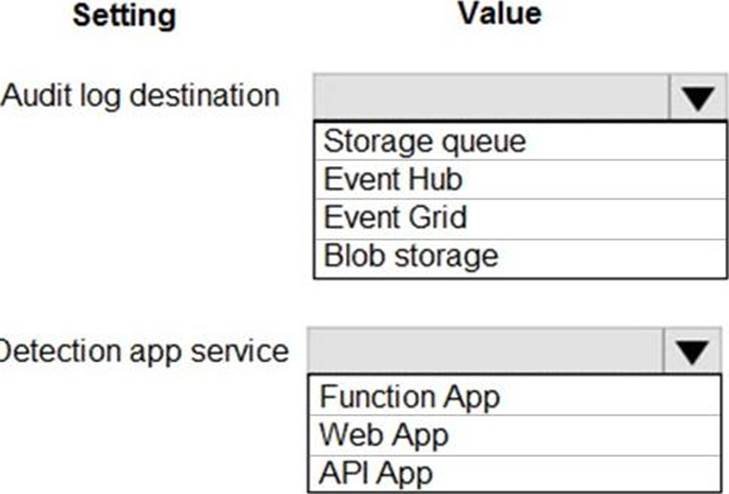
HOTSPOT
You need to design the authentication and authorization methods for sensors.
What should you recommend? To answer, select the appropriate options in the answer area. NOTE: Each correct selection is worth one point.
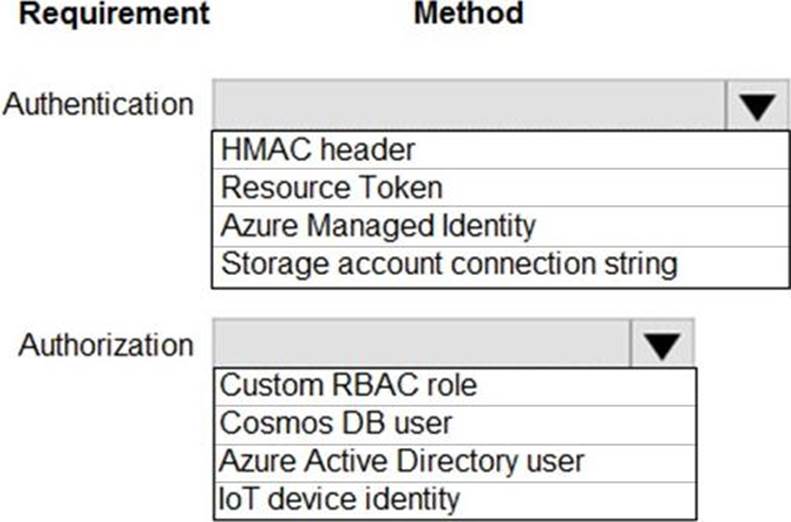
HOTSPOT
You need to ensure that emergency road response vehicles are dispatched automatically.
How should you design the processing system? To answer, select the appropriate options in the answer area. NOTE: Each correct selection is worth one point.

You need to recommend an Azure SQL Database pricing tier for Planning Assistance.
Which pricing tier should you recommend?
- A . Business critical Azure SQL Database single database
- B . General purpose Azure SQL Database Managed Instance
- C . Business critical Azure SQL Database Managed Instance
- D . General purpose Azure SQL Database single database
HOTSPOT
You need to design the SensorData collection.
What should you recommend? To answer, select the appropriate options in the answer area. NOTE: Each correct selection is worth one point.
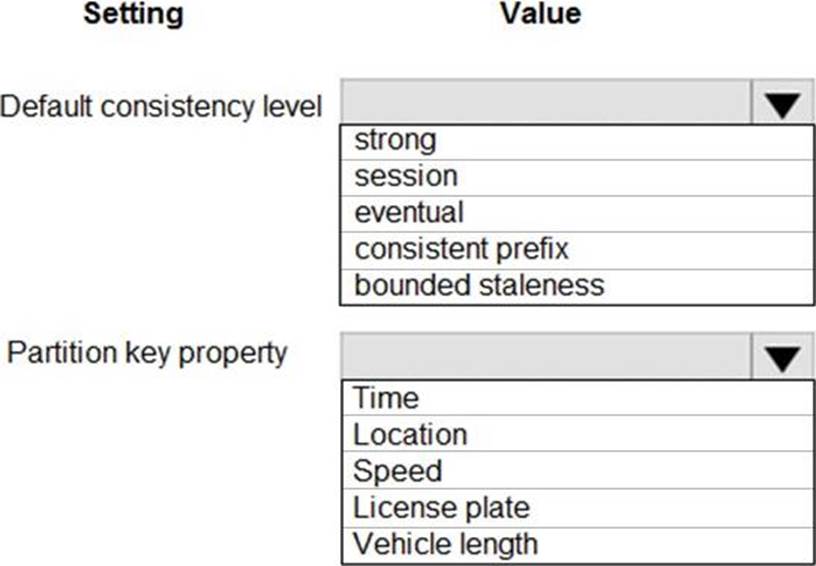
HOTSPOT
You need to design the data loading pipeline for Planning Assistance.
What should you recommend? To answer, drag the appropriate technologies to the correct locations. Each technology may be used once, more than once, or not at all. You may need to drag the split bar between panes or scroll to view content. NOTE: Each correct selection is worth one point.

DRAG DROP
You need to ensure that performance requirements for Backtrack reports are met.
What should you recommend? To answer, drag the appropriate technologies to the correct locations. Each technology may be used once, more than once, or not at all. You may need to drag the split bar between panes or scroll to view content. NOTE: Each correct selection is worth one point.

You need to design the runtime environment for the Real Time Response system.
What should you recommend?
- A . General Purpose nodes without the Enterprise Security package
- B . Memory Optimized Nodes without the Enterprise Security package
- C . Memory Optimized nodes with the Enterprise Security package
- D . General Purpose nodes with the Enterprise Security package
Latest DP-201 Dumps Valid Version with 208 Q&As
Latest And Valid Q&A | Instant Download | Once Fail, Full Refund

